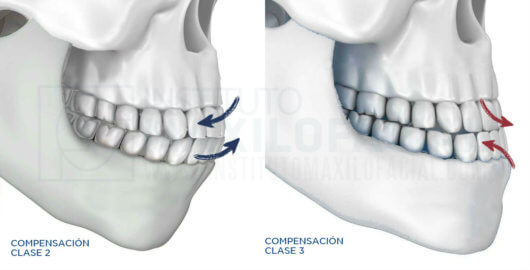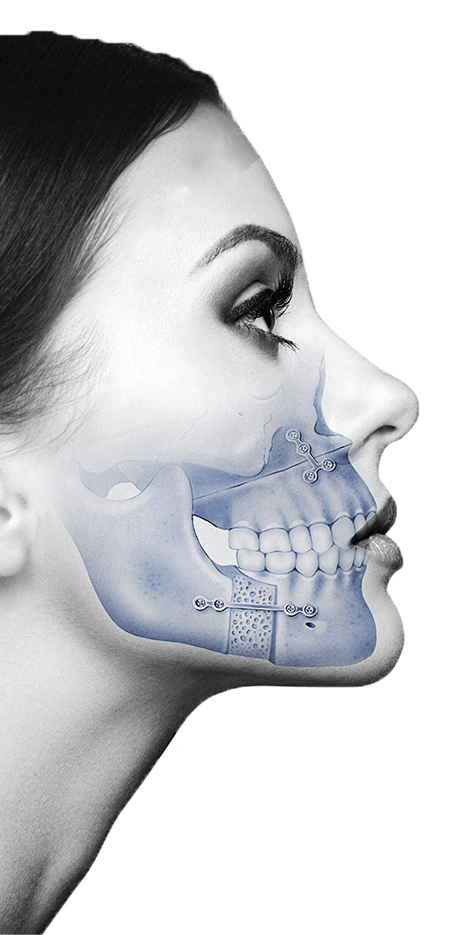Before orthognathic surgery, the majority of the candidate patients must undergo an orthodontic treatment that prepares them for surgery (except those patients to whom the Surgery First or Surgery Only protocol applies) this requires close collaboration between maxillofacial surgeon and orthodontist.

- In patients with Class II occlusion the upper front teeth tend to lean back to compensate for the protruding jaw, while the lower incisors lean forward to compensate for a retracted jaw
- In patients with Class III occlusion the upper front teeth tend to lean forward to compensate for a retracted jaw, while the lower incisors lean forward to compensate for jaw prognathism.
This phenomenon is called "dentoalveolar compensation," and is an attempt by the body to maintain a normal relationship between dental arches.

Thus, orthodontic decompensation of cases of skeletal class II malocclusion requires increasing the amount of overbite, while orthodontic decompensation of skeletal class III is achieved by increasing the overbite below the maximum.
While these movements will "worsen" the patient's deformity momentarily, they are essential to allow the surgeon to correct the problem to its full extent and to achieve normal occlusal relationships when the bones are correctly placed during orthognathic surgery.
On the contrary, not carrying out a correct decompensation before the operation considerably limits the scope of the surgical correction, and compromises the aesthetic and functional results thereof.
In some cases, pre-surgical decompensation requires dental extractions, although this is at the discretion of the orthodontist and is usually avoided provided that the jaw space allows proper dental alignment. In all cases, it is the orthodontist and the maxillofacial surgeon who must make a joint decision on the treatment's approach.
Related:








